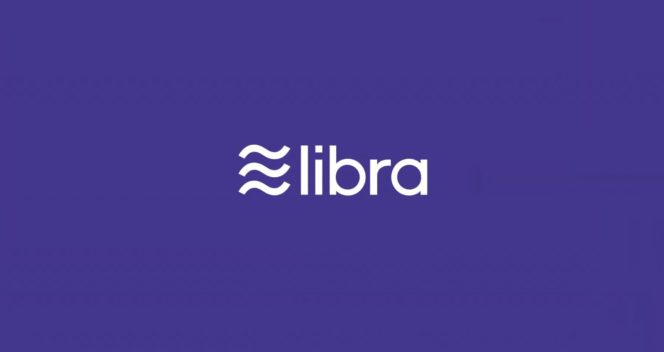Panel discussion with Lorenzo Bini Smaghi, Chairman of the Board of Directors of Société Générale and former member of the ECB Board; Charles Calomiris, Professor, Financial Institutions at Columbia University; Antoine Lissowski, Chief Executive Officer of CNP; Shubhada Rao, Chief Economist at Yes Bank; Wilfried Verstraete, Chairman of the Management Board of Euler Hermes; and Olivier Klein, Chief Executive Officer of BRED and Professor of Financial Economics at HEC.
The most recent major financial crisis led to a risk of deflation that justified unconventional monetary policies, with zero or even negative short-term and long-term interest rates approaching zero because of Quantitative Easing. Setting long-term interest rates below the nominal growth rate helps those with excessive debt regain their financial well-being more easily. At the same time and in conjunction, it also revives the economy.
Today, we are no longer exposed to the risk of deflation, given our undeniable growth and a sharp recovery in credit, albeit earlier in the US than in the eurozone.
The risk of a financial crisis therefore does not come directly from this, but from maintaining a very accommodating and even exceptional monetary policy, which is no longer necessary once there’s no longer any risk of deflation. In the United States though, this policy has slightly shifted with the Fed raising key interest rates beginning in 2016 and phasing out Quantitative Easing since 2017. Also in the Eurozone, net securities purchases due to Quantitative Easing have stopped since the end of 2018, with stabilisation of the ECB’s balance sheet without any reduction, but its zero or even negative key interest rates have remained unchanged.
In addition, there is now talk in both the US and the Eurozone of going back to rate cuts and possibly resuming net QE purchases.
Why? Because inflation is not where the central banks want it to be. Will it get there in the short term? That is not what we are discussing here, but it is not obvious that inflation will achieve its target in the short term. The effects of globalisation and of the technological revolution, as well as the current regulation in the labor market, seem to induce a flattering of the Phillips curve. Without a significant rise in inflation, can we constantly pursue this goal with near-zero or negative short-term and long-term interest rates?
More likely, the central banks tacit reason to do so is that they fear a rate hike that would end up posing serious insolvency problems for the private sector. But that is also the case for the public sector. The issue of fiscal dominance therefore seems to be coming into view, since the central banks seem to be under pressure to avoid compromising the solvency of States.
There is also the current fear of an economic downturn that explains the desire of central banks to pursue even more accommodating policies.
So, for all these reasons, it is generally agreed that very low interest rates are here for the long haul. In other words, they are “low for long”. I believe that this leads to a dangerous vicious circle, because keeping nominal interest rates below nominal growth rates for too long doesn’t help economic players to reduce their debt. It actually just encourages them to continue taking on even more debt. This also drives borrowers as well as savers and institutional investors to be increasingly reckless in taking risks: some in terms of their financial structure and others with regard to the future value of their investments so that they can gain at least some returns.
This leads directly to increased financial instability and therefore an increased risk of a financial crisis. If we look at all the financial crises historically and analytically, we can very clearly identify the signs of a rather mature financial cycle, which may cause a potentially significant financial crisis to return sooner or later. Of course, we never know exactly when. The three canonical forms of systemic crises are those associated with the bursting of speculative bubbles on wealth assets such as stocks and real estate, those associated with the bursting of a credit bubble, and liquidity crises. And of course, these three forms can combine with each other.
Where could the crisis come from this time? Probably not from a stock market bubble. P/E ratios are not excessive in relation to their past trends, even though indexes are breaking records and certain sectors seem to be overvalued. The real estate bubble, facilitated by extremely low interest rates, also doesn’t seem to have been an extremely serious problem so far. However, housing and commercial property prices continue to rise. Even general price index adjusted, in many countries they have returned to near or above where they were before the crisis, which itself was triggered in 2007 by a bursting real estate bubble tied to a credit bubble.
But above all, what is disturbing today is the credit bubble itself. It is not specifically a banking issue, because it touches on all forms of indebtedness also permitted by all the financial investors, investment funds, insurers, pension funds, and so on. The global debt ratio has increased dramatically over the last 10 years since the Great Financial Crisis. As we have said, this has been facilitated by interest rates that have been too low relative to the nominal growth rate for too long.
For example, global debt, including both the public and private sectors, was around 190% of global GDP in 2001, 200% in 2008, and 230% in 2018 (source: BIS). Advanced countries rose from about 200% in 2001, to 240% in 2008, and to 265% in 2018.
We therefore have not seen a global debt reduction, including in OECD countries, but there has been debt reduction only for certain economic agents and in certain countries.
However, this higher global debt ratio is not the only reason to fear the next crisis. As always during each identical phase of the financial cycle, it has been accompanied by stronger and stronger risk-taking by both borrowers and investors. These are individual savers or institutional investors (most of the time representing individual savers) who are seeking at least some returns, despite the interest rate structure grinding down to zero. It goes without saying that it is difficult to offer negative returns to savers. Given that, pension funds, insurers, investment funds, and banks are trying in good faith to find bonds and loans that pay off at least a little.
We are fully in the euphoric phase of the credit cycle in the sense that players are ignoring risk with the hope that interest rates will remain low for the long term and that growth will go on forever, so that the risks taken do not prove true. This type of phase is well identified historically, and the cycle even seems to be quite mature. Corporate loans are therefore being granted to firms with declining solvency, which in turn increases their financial vulnerability. Loans and credit are becoming longer and increasingly illiquid. More and more of these loans are granted in the form of bullet loans, with principal repayable on the final maturity date without regular repayments. This is an aberration for both the lender and the borrower, given that the borrower cannot repeat this process each year because of its medium size and “plays on” its ability to renew its loan on more or less favourable financial conditions once its loan or credit reaches its maturity. Even so, everyone is taking on more and more bullet debt.
And there is also more leverage, dangerously increasing the company’s financial risk intrinsically. In addition, the amount and quality of collateral or guarantees have fallen sharply in recent years. As for covenants, which allow contractual limits to be placed on the debt-to-equity ratio or EBIT, they have been completely distorted. Covenants are still quite frequent today, but since they are fixed at such low levels, this amounts to placing a limit that tends towards infinity. At the same time, risk premiums have fallen considerably, further increasing the vulnerability of lenders.
As such, banks, pension funds, investment funds, and insurers have begun to accumulate much more illiquid and much riskier assets with much lower risk premiums. Furthermore, for several years, borrowers have been increasing their leverage and resorting to longer and longer bullet loans with fewer and fewer financial constraints imposed by lenders, making their financial situation even weaker.
So, what are the factors that could cause the bubble to burst? Of course, everyone is talking about rising interest rates. And since the belief is that inflation – and therefore interest rates – won’t rise soon, it can ultimately be assumed that there won’t be any financial crisis.
But I do not agree.
Actually, a rise in interest rates would be detrimental to many players, especially zombie companies, those that would become insolvent if rates were to return to normal. I remind you that in the OECD, they represented 1% of companies in 1990, 5% in 2000, 12% in 2016.
But the risk is not just a potential rate hike that may not be on the horizon. It may also come from a sharp slowdown in growth because we have had coinciding financial cycles and real cycles. When that happens, the crisis is in full swing, and then there is a systemic crisis. In turn, a sharp slowdown may come from causes other than rising rates. For example, geopolitical causes may arise. Lorenzo Bini Smaghi mentioned several possibilities in this regard. Or simply a sharp slowdown may be due to the usual investment cycle, production or real estate investment.
A sharp slowdown in growth leads to a decline in revenues and cash flows. As a result, debt repayment becomes more difficult for both governments and businesses. This same slowdown leads to an increase in risk premiums and therefore an asset value that depreciates sharply, as well as a negative wealth effect that increases depression.
The problem of abrupt depreciation of assets is probably lower for insurers and pension funds, because the money is in principle locked in for the long term (although this characteristic is now less true for life insurers in France) and because of the protection of accounting rules specific to insurers in particular. Lastly, the prudential rules (Solvency 2) for insurers provide greater protection against this type of risk. However, this risk is much greater for investment funds, which, in the event of a significant downturn, would induce a major negative impact on the rating of their assets, which could lead them to suddenly sell off their assets, and all the funds at the same time. And if there is a sudden depreciation of the value of the assets held, investors could start to pull out of the funds. In addition, funds generally offer liquidity to their investors but are increasingly buying illiquid assets. By the way, I hope that “fund runs” we have seen quite recently are not indicators of a forthcoming crisis. On the banks side, they are much better capitalised than before. So, in my view, they are less risky. And they are better protected against liquidity risk because of the ratio (LCR) that they must respect in this regard.
In my opinion, the next risk of a major financial crisis will instead stem from shadow banking, in the general sense. All the more the case with the macro-prudential policies, which are supposed to stem the risk of the building up of financial instability, because they only target the banking sector and not shadow banking. In addition, the structure of the yield curve with rates flattened to zero, sometimes even with central bank deposit rates below zero and long-term rates very close to or below zero, as in the Eurozone, is gradually weakening banks. They will thus gradually be less able to lend at the same growth rate. But this shouldn’t be felt for a few more years. In the short term, banks are undeniably more secure than before.
In conclusion, the danger is that central banks, which have quite rightly fought catastrophic risks with highly innovative instruments, will want to use these same weapons to cope with downturns and to protect players carrying excessive debt for too long. The monetary policy regime will lead to a long-lasting situation of zero interest rates and will be one of the main determining factors of the financial cycle dynamics. In that case, it would undoubtedly delay the next financial crisis but would considerably increase its force.



